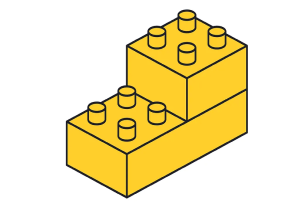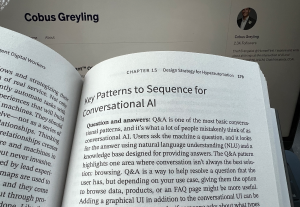Market applications on the long-tail of user needs
Article by Kasey Klimes
When to Design for Emergence
- The author uncovers a very different paradigm for thinking about the way we design products, tools, and services call this paradigm design for emergence.
- The author describes how the following helps put us this future in the context:
- High Modern Design
- User-Centered Design
- In design for emergence, the designer assumes that the end-user holds relevant knowledge and gives them extensive control over the design.
- A useful boundary can be drawn around design for emergence with the following criteria:
- The designer can be meaningfully surprised by what the end-user creates with their tool.
- The end-user can integrate their local or contextual knowledge into their application of the tool.
- The end-user doesn’t need technical knowledge or training to create a valuable application of the tool.
- The author names the best examples of design for emergence and how they’ve won robust user bases by supporting a broad swath of long-tail user needs.
Share:When to Design for Emergence
Share this link
- December 7, 2022
10 min read

- Accessibility, Artificial Intelligence, Augmented Reality, Behavioral Science, Customer Experience, Design, Empathy, Usability, UX Education, UX Magazine, UX World Changing Ideas
If it looks like a duck…
Article by Daniel Godoy
Conscious AI models?
- The author uncovers what LaMDA and consciousness are, and how they correlate.
- While exploring conscious AI models, there are a few things that need to be considered:
- Conscious Access
- Reflexive Processing
- The Question of Reporting
- Autonomy
Share:Conscious AI models?
Share this link
- December 6, 2022
8 min read

- Accessibility, Behavioral Science, Customer Experience, Design, Design Theory, Empathy, Usability, UX Education, UX Magazine, UX World Changing Ideas
There seems to be a pervasive idea that using systems to help your work will lead to everything being a homogenous, grey, functional, meh experience. But delight is important! So, how can we design our processes to make sure that delight is a key part in what makes your MVPs ‘viable’?
Article by Luke Murphy
Building Delight in Your Design System
- The author shares the edited version of the talk about design systems that he delivered to Design Matters in Copenhagen in September, 2022.
- The author separates and explains the difference between “Deep Delight vs Surface Delight” in design based on the user experience of McDonalds.
- The author explains the way the Kano model works (Noriaki Kano developed the Kano model back in the 80s that shows that customer loyalty is connected to our emotional responses to product features.
- There are 5 types of delight according to Microsoft’s categorizations:
- Playful experiences
- Attractive experiences
- Natural experiences
- Personal experiences
- Empowered experiences
- The author gives tips on how to build delight into your system and how to make that delight repeatable by measuring it and not forgetting your (internal) users.
Share:Building Delight in Your Design System
Share this link
- November 30, 2022
13 min read

- Accessibility, Artificial Intelligence, Augmented Reality, Behavioral Science, Conversational Design, Customer Experience, Defining AI, Design, Usability, UX Education, UX Magazine
Conversational AI is the infinitely scalable interface.
Article by Cobus Greyling
Age of Invisible Machines
- Cobus Greyling shares his take on the new Wall Street Journal bestselling business book, Age of Invisible Machines by Robb Wilson with Josh Tyson
Share:Age of Invisible Machines
Share this link
- November 29, 2022
3 min read

- Customer Experience, Design, Design Theory, Employee Experience, Employment and Hiring, Internal Company Dynamics, Usability, UX Education, UX Magazine
Making a space for healthy conflict in an organization to work through confusion and disagreement.
Article by Nate Schloesser
Creating a Fight Club
- The author shares ideas that helped him organize better communication within the company he was working at.
- The author went through the following steps and processes:
- Setting Topics
- Choosing a Facilitator
- Participants
- The Structure
- Rules of Engagement
- Rules of Etiquette
- Chatham House Rule
Share:Creating a Fight Club
Share this link
- November 23, 2022
6 min read

- Behavioral Science, Customer Experience, Design, Empathy, Employee Experience, Employment and Hiring, Human factors, Technology, Usability, UX Education, UX Magazine
Indeed’s global head of UX operations uses this superpower to help others do their best work.
Article by Michaela Hackner
Redefining Leadership Through Empathy
- The author shares her story of how enbracing empathy instead of fighting against it helped her evolve into a stronger manager and leader.
- The author unpacks the steps of how empathy helps shape Indeed’s operations strategy:
- Understand where you’re at
- Know where you’re going and how you get there
- Invite more empathy in your work
- Let empathy lead you
Share:Redefining Leadership Through Empathy
Share this link
- November 22, 2022
10 min read


